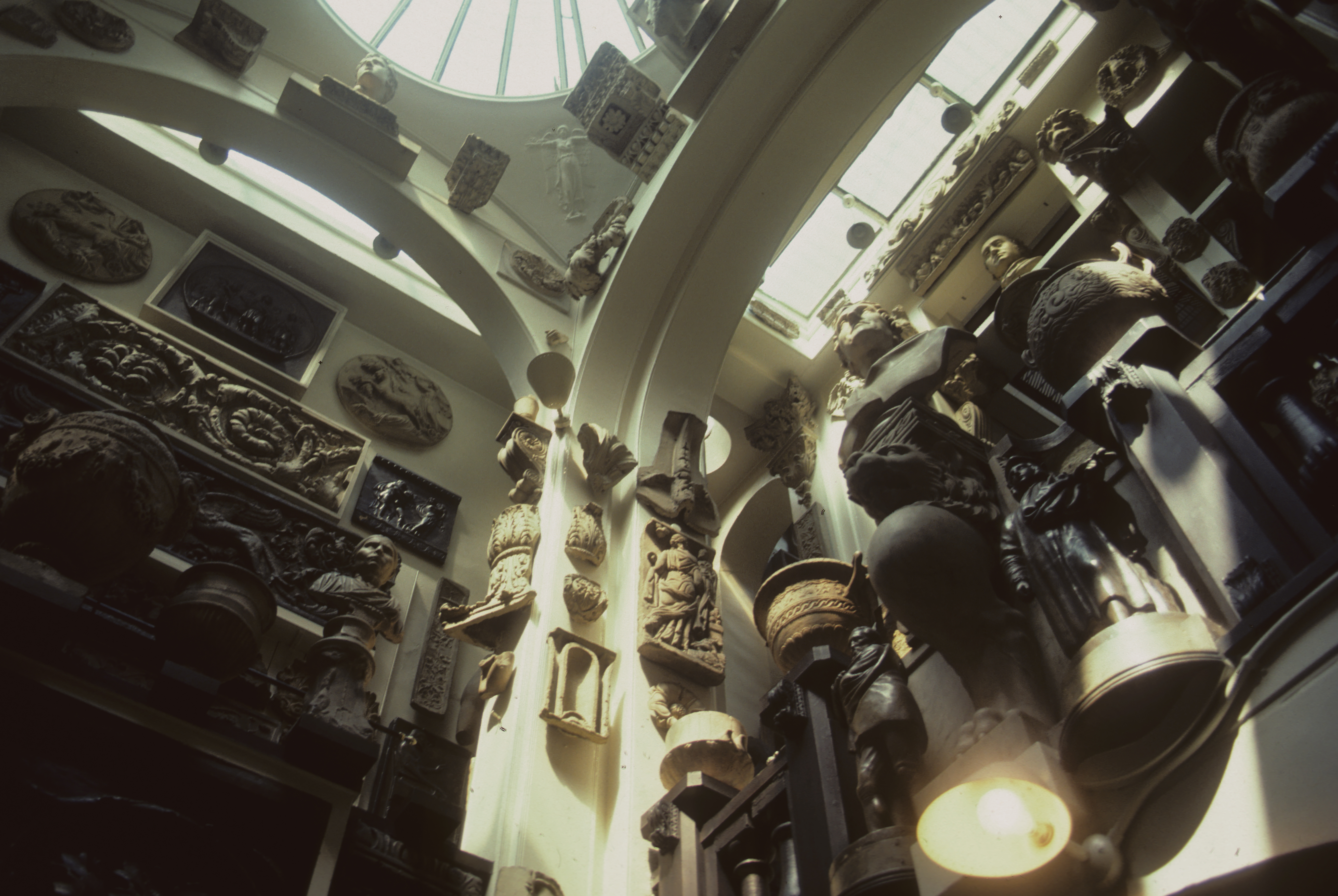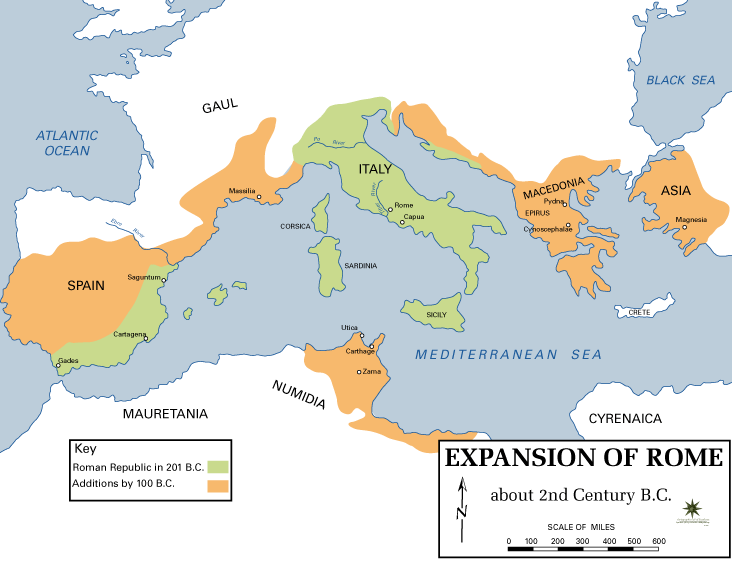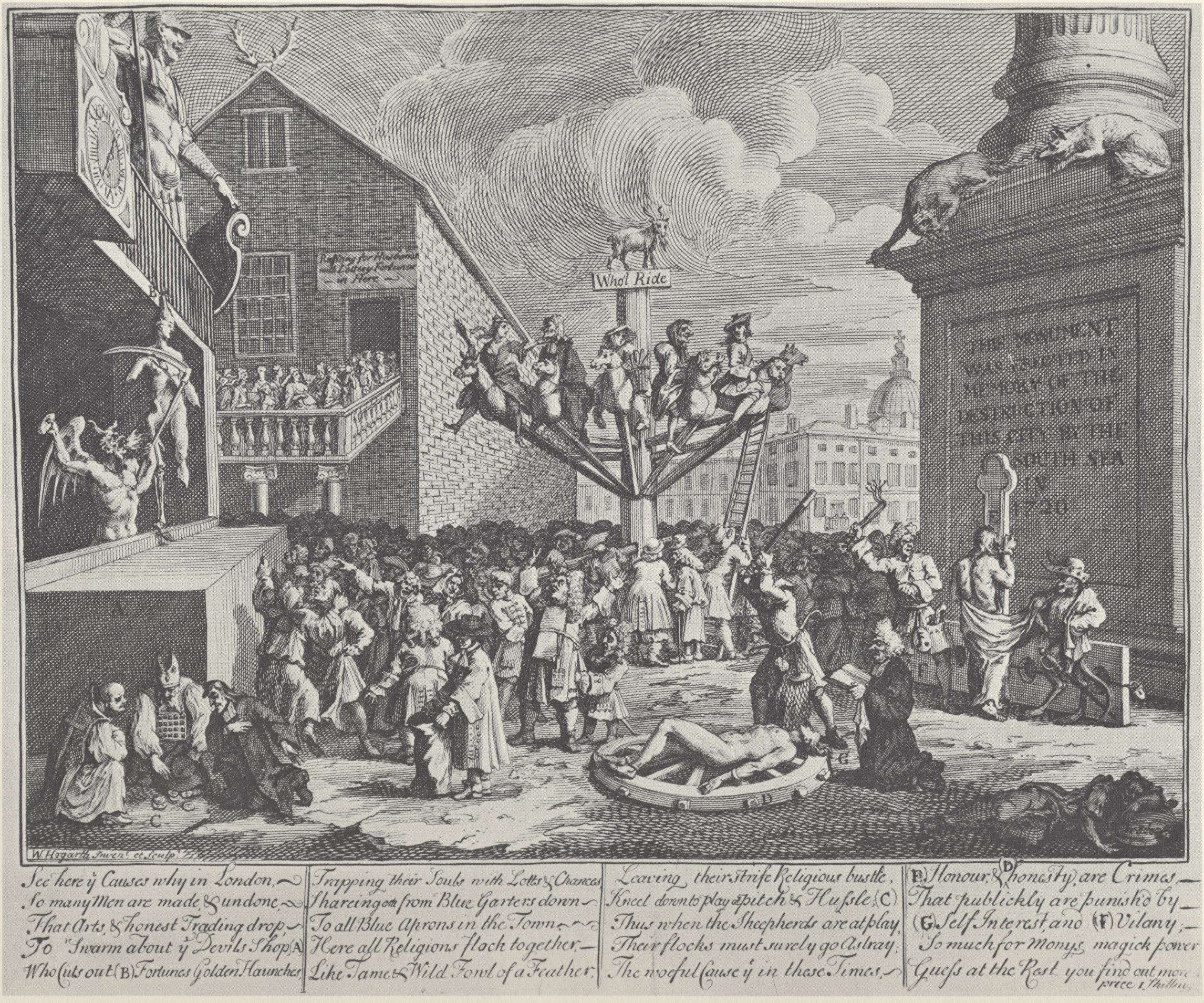|
Joseph Gott
Joseph Gott (1785–1860) was a 19th century British sculptor. His terracotta groups and animal and children pieces were very popular in the 1830s. Life He was born at Calverley near Leeds in 1785 the son of industrialist Benjamin Gott, a woollen manufacturer in Leeds and Mayor of Leeds from 1799. Joseph was baptised on 11 December 1785 in London. Unlike his brothers he did not join the family business of Gott & Sons. He was apprenticed to the eminent sculptor John Flaxman in London from 1798 to 1802. He joined the Royal Academy Schools in 1805. He received patronage from his rich cousin Benjamin Gott and also George Banks a wealthy Yorkshireman. In 1822 Sir Thomas Lawrence gave him a letter of introduction to Antonio Canova in Rome. He did not take this trip immediately and only in 1824 did his father agree to underwrite the cost of his travel and accommodation in Rome. Thereafter he spent most of his remaining life in Rome. His most successful period ended abruptly in 1 ... [...More Info...] [...Related Items...] OR: [Wikipedia] [Google] [Baidu] |
Joseph Gott, Arianna, 1800-50ca
Joseph is a common male given name, derived from the Hebrew Yosef (יוֹסֵף). "Joseph" is used, along with "Josef", mostly in English, French and partially German languages. This spelling is also found as a variant in the languages of the modern-day Nordic countries. In Portuguese and Spanish, the name is "José". In Arabic, including in the Quran, the name is spelled ''Yūsuf''. In Persian, the name is "Yousef". The name has enjoyed significant popularity in its many forms in numerous countries, and ''Joseph'' was one of the two names, along with ''Robert'', to have remained in the top 10 boys' names list in the US from 1925 to 1972. It is especially common in contemporary Israel, as either "Yossi" or "Yossef", and in Italy, where the name "Giuseppe" was the most common male name in the 20th century. In the first century CE, Joseph was the second most popular male name for Palestine Jews. In the Book of Genesis Joseph is Jacob's eleventh son and Rachel's first son, and kn ... [...More Info...] [...Related Items...] OR: [Wikipedia] [Google] [Baidu] |
Joseph Severn
Joseph Severn (7 December 1793 – 3 August 1879) was an English portrait and subject painter and a personal friend of the famous English poet John Keats. He exhibited portraits, Italian genre, literary and biblical subjects, and a selection of his paintings can today be found in some of the most important museums in London, including the National Portrait Gallery, the Victoria and Albert Museum and Tate Britain. Background The eldest son of a music teacher, Severn was born at Hoxton, near London, and apprenticed at the age of 14 to William Bond, an engraver. Severn was one of seven children; two of his brothers, Thomas (1801–1881) and Charles (1806–1894), became professional musicians, and Severn himself was an adroit pianist. During his early years he practised portraiture as a miniaturist. Early years in London 1815-1820 In 1815, he was admitted to the Royal Academy Schools in London and exhibited his first work in oil, ''Hermia and Helena'', a subject fro ... [...More Info...] [...Related Items...] OR: [Wikipedia] [Google] [Baidu] |
Soane Museum
Sir John Soane's Museum is a house museum, located next to Lincoln's Inn Fields in Holborn, London, which was formerly the home of neo-classical architect, John Soane. It holds many drawings and architectural models of Soane's projects, and a large collection of paintings, sculptures, drawings and antiquities that he acquired over many years. The museum was established during Soane's own lifetime by a Private Act of Parliament in 1833, which took effect on his death in 1837. Soane engaged in this lengthy parliamentary campaign in order to disinherit his son, whom he disliked intensely. The act stipulated that on Soane's death his house and collections would pass into the care of a Board of Trustees, acting on behalf of the nation, and that they would be preserved as nearly as possible exactly in the state they were at his death. The museum's trustees remained completely independent, relying only on Soane's original endowment, until 1947. Since then, the museum has received an a ... [...More Info...] [...Related Items...] OR: [Wikipedia] [Google] [Baidu] |
Spartacus
Spartacus ( el, Σπάρτακος '; la, Spartacus; c. 103–71 BC) was a Thracian gladiator who, along with Crixus, Gannicus, Castus, and Oenomaus, was one of the escaped slave leaders in the Third Servile War, a major slave uprising against the Roman Republic. Little is known about him beyond the events of the war, and surviving historical accounts are sometimes contradictory. All sources agree that he was a former gladiator and an accomplished military leader. This rebellion, interpreted by some as an example of oppressed people fighting for their freedom against a slave-owning oligarchy, has provided inspiration for many political thinkers, and has been featured in literature, television, and film. The philosopher Voltaire described the Third Servile War as "the only just war in history". Although this interpretation is not specifically contradicted by classical historians, no historical account mentions that the goal was to end slavery in the Republic. Early lif ... [...More Info...] [...Related Items...] OR: [Wikipedia] [Google] [Baidu] |
William Hogarth
William Hogarth (; 10 November 1697 – 26 October 1764) was an English painter, engraver, pictorial satirist, social critic, editorial cartoonist and occasional writer on art. His work ranges from realistic portraiture to comic strip-like series of pictures called "modern moral subjects", and he is perhaps best known for his series ''A Harlot's Progress'', ''A Rake's Progress'' and '' Marriage A-la-Mode''. Knowledge of his work is so pervasive that satirical political illustrations in this style are often referred to as "Hogarthian". Hogarth was born in London to a lower-middle-class family. In his youth he took up an apprenticeship with an engraver, but did not complete the apprenticeship. His father underwent periods of mixed fortune, and was at one time imprisoned in lieu of outstanding debts, an event that is thought to have informed William's paintings and prints with a hard edge. Influenced by French and Italian painting and engraving, Hogarth's works are mostly sat ... [...More Info...] [...Related Items...] OR: [Wikipedia] [Google] [Baidu] |
Sisyphus
In Greek mythology, Sisyphus or Sisyphos (; Ancient Greek: Σίσυφος ''Sísyphos'') was the founder and king of Ancient Corinth, Ephyra (now known as Corinth). Hades punished him for cheating death twice by forcing him to roll an immense boulder up a hill only for it to roll down every time it neared the top, repeating this action for eternity. Through the classicism, classical influence on modern culture, tasks that are both wikt:laborious#Adjective, laborious and wikt:futile#Adjective, futile are therefore described as Sisyphean (). Etymology Robert S. P. Beekes, R. S. P. Beekes has suggested a pre-Greek origin and a connection with the root of the word ' (σοφός, "wise"). German mythographer Otto Gruppe thought that the name derived from ' (σίσυς, "a goat's skin"), in reference to a rain-charm in which goats' skins were used. Family Sisyphus was formerly a Ancient Thessaly, Thessalian prince as the son of King Aeolus (son of Hellen), Aeolus of Aeolia and Ena ... [...More Info...] [...Related Items...] OR: [Wikipedia] [Google] [Baidu] |
Chatsworth House
Chatsworth House is a stately home in the Derbyshire Dales, north-east of Bakewell and west of Chesterfield, Derbyshire, Chesterfield, England. The seat of the Duke of Devonshire, it has belonged to the House of Cavendish, Cavendish family since 1549. It stands on the east bank of the River Derwent, Derbyshire, River Derwent, across from hills between the Derwent and River Wye, Derbyshire, Wye valleys, amid parkland backed by wooded hills that rise to heather moorland. The house holds major collections of paintings, furniture, Old Master drawings, neoclassical sculptures and books. Chosen several times as Britain's favourite country house, it is a Grade I listed property from the 17th century, altered in the 18th and 19th centuries. In 2011–2012 it underwent a £14-million restoration. The owner is the Chatsworth House Trust, an independent charitable foundation, on behalf of the Cavendish family. History 11th–16th centuries The name 'Chatsworth' is a corruption of ''Che ... [...More Info...] [...Related Items...] OR: [Wikipedia] [Google] [Baidu] |
Bacchante
In Greek mythology, maenads (; grc, μαινάδες ) were the female followers of Dionysus and the most significant members of the Thiasus, the god's retinue. Their name literally translates as "raving ones". Maenads were known as Bassarids, Bacchae , or Bacchantes in Roman mythology after the penchant of the equivalent Roman god, Bacchus, to wear a bassaris or fox skin. Often the maenads were portrayed as inspired by Dionysus into a state of ecstatic frenzy through a combination of dancing and intoxication. During these rites, the maenads would dress in fawn skins and carry a thyrsus, a long stick wrapped in ivy or vine leaves and tipped with a pine cone. They would weave ivy-wreaths around their heads or wear a bull helmet in honor of their god, and often handle or wear snakes. These women were mythologized as the "mad women" who were nurses of Dionysus in Nysa. Lycurgus "chased the Nurses of the frenzied Dionysus through the holy hills of Nysa, and the sacred implements ... [...More Info...] [...Related Items...] OR: [Wikipedia] [Google] [Baidu] |
William Ewart Statue, Liverpool - DSC09456
William is a masculine given name of Norman French origin.Hanks, Hardcastle and Hodges, ''Oxford Dictionary of First Names'', Oxford University Press, 2nd edition, , p. 276. It became very popular in the English language after the Norman conquest of England in 1066,All Things William"Meaning & Origin of the Name"/ref> and remained so throughout the Middle Ages and into the modern era. It is sometimes abbreviated "Wm." Shortened familiar versions in English include Will, Wills, Willy, Willie, Liam, Bill, and Billy. A common Irish form is Liam. Scottish diminutives include Wull, Willie or Wullie (as in Oor Wullie or the play ''Douglas''). Female forms are Willa, Willemina, Wilma and Wilhelmina. Etymology William is related to the German given name ''Wilhelm''. Both ultimately descend from Proto-Germanic ''*Wiljahelmaz'', with a direct cognate also in the Old Norse name ''Vilhjalmr'' and a West Germanic borrowing into Medieval Latin ''Willelmus''. The Proto-Germanic name is a ... [...More Info...] [...Related Items...] OR: [Wikipedia] [Google] [Baidu] |
Mangotsfield
Mangotsfield is an urban area and former village in the unitary authority area of South Gloucestershire, in the ceremonial county of Gloucestershire, England, to the north-east of Bristol. The village was mentioned in the Domesday Book in 1086 as ''Manegodesfelle'', and as ''Manegodesfeld'' in 1377. Between 1845 and 1966 the village was served by Mangotsfield railway station. Parish Until the 19th century Mangotsfield was the principal settlement in a large ancient parish, which also included the hamlets of Downend and Staple Hill to the west of the village, and Emersons Green, Vinny Green, Blackhorse and Moorend to the north. The parish became the civil parish of Mangotsfield in 1866. In the early 20th century Downend and Staple Hill were developed into suburbs of Bristol and outgrew the village of Mangotsfield. In 1921 the parish had a population of 10,720. In 1927 the civil parish was abolished and divided into two. Downend, Staple Hill and Mangotsfield village beca ... [...More Info...] [...Related Items...] OR: [Wikipedia] [Google] [Baidu] |
Livorno
Livorno () is a port city on the Ligurian Sea on the western coast of Tuscany, Italy. It is the capital of the Province of Livorno, having a population of 158,493 residents in December 2017. It is traditionally known in English as Leghorn (pronounced , "Leghorn" in the . or ). During the , Livorno was designed as an "". Developing c ... [...More Info...] [...Related Items...] OR: [Wikipedia] [Google] [Baidu] |
Percy Bysshe Shelley
Percy Bysshe Shelley ( ; 4 August 17928 July 1822) was one of the major English Romantic poets. A radical in his poetry as well as in his political and social views, Shelley did not achieve fame during his lifetime, but recognition of his achievements in poetry grew steadily following his death and he became an important influence on subsequent generations of poets including Robert Browning, Algernon Charles Swinburne, Thomas Hardy, and W. B. Yeats. American literary critic Harold Bloom describes him as "a superb craftsman, a lyric poet without rival, and surely one of the most advanced sceptical intellects ever to write a poem." Shelly's reputation fluctuated during the 20th century, but in recent decades he has achieved increasing critical acclaim for the sweeping momentum of his poetic imagery, his mastery of genres and verse forms, and the complex interplay of sceptical, idealist, and materialist ideas in his work. Among his best-known works are "Ozymandias" (1818), "Ode ... [...More Info...] [...Related Items...] OR: [Wikipedia] [Google] [Baidu] |









